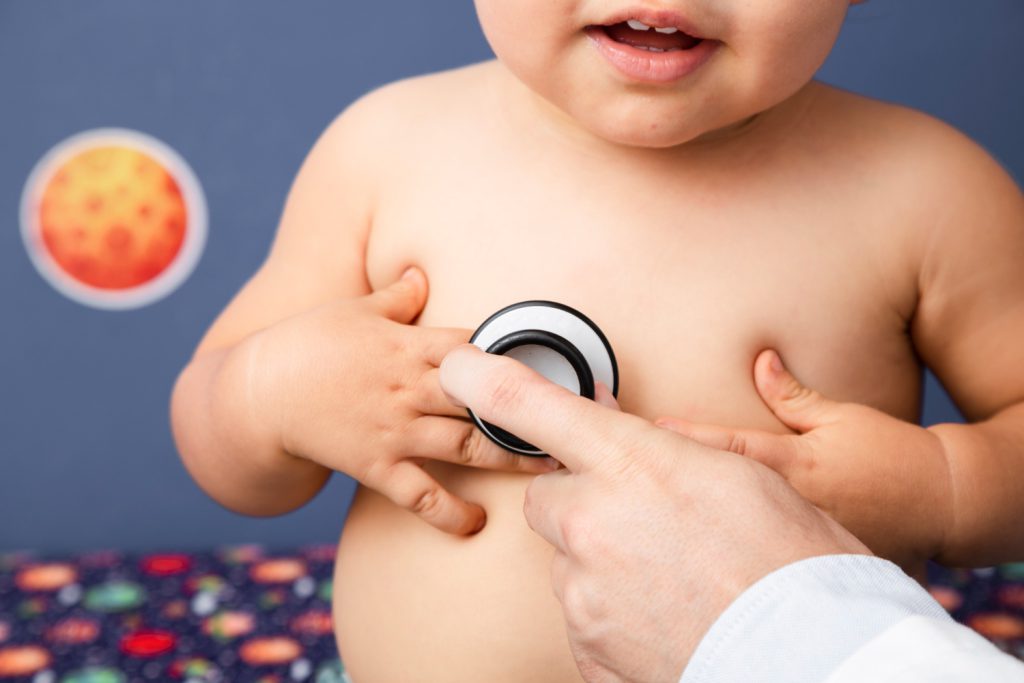Real-Time Imaging:
Paediatric ultrasound’s real-time imaging capability allows healthcare professionals to observe internal structures dynamically. This feature is particularly valuable in assessing moving structures, such as the heart, and facilitates accurate and immediate diagnosis. Real-time imaging enhances the precision of assessments, contributing to effective and timely medical interventions.
Versatility:
From abdominal imaging to musculoskeletal assessments and cardiac evaluations, paediatric ultrasound is a versatile tool applicable to various medical scenarios. Its adaptability makes it a go-to choose for comprehensive children care, allowing healthcare professionals to address a wide range of conditions using a single diagnostic tool.
Common Pathologies Detected by Paediatric Ultrasound
Abdominal Conditions:
Paediatric ultrasound excels in diagnosing abdominal pathologies, including issues with the liver, kidneys, gallbladder, and gastrointestinal tract. It is particularly adept at identifying cysts, tumors, or congenital abnormalities, providing crucial information for accurate diagnosis and treatment planning.
Musculoskeletal Disorders:
In orthopaedics, paediatric ultrasound is instrumental in assessing developmental dysplasia of the hip, fractures, joint effusions, and other musculoskeletal conditions. Its ability to capture detailed images of soft tissues aids in precise diagnoses and treatment planning, guiding orthopaedic. interventions effectively.
Thyroid and Neck Pathologies:
Paediatric ultrasound is a valuable tool in evaluating the thyroid and detecting abnormalities in the neck region. It plays a crucial role in identifying thyroid nodules, cysts, or other anomalies that may impact overall health, contributing to early intervention and management.
Scrotal and Pelvic Conditions:
Ultrasound is commonly used to assess scrotal and pelvic regions in paediatric patients. It aids in diagnosing conditions such as undescended testicles, testicular torsion, and pelvic inflammatory diseases. Pediatric pelvic scans investigate the cause of symptoms such as pelvic pain, urinary problems, or abnormal menstrual bleeding, enabling doctors to detect abnormalities early on.
Soft Tissue Injuries:
Paediatric ultrasound is effective in evaluating soft tissue injuries related to sports or accidents. Its ability to capture detailed images of soft tissues aids in precise diagnosis, guiding appropriate treatment plans and contributing to a swift recovery.
The Limitations of Paediatric Ultrasound
While paediatric ultrasound is a highly valuable diagnostic tool, it does have limitations. For example, it may be less effective in imaging structures obscured by bone or gas, and its accuracy can be operator-dependent. However, advancements in technology and the expertise of our skilled professionals at Ultram help overcome these limitations, ensuring accurate and reliable results.
We prioritize your child’s comfort and well-being. Our procedures are designed to minimize stress and anxiety, creating a positive experience for both children and parents. In the realm of paediatric diagnostics, choosing the right imaging modality is crucial for ensuring accurate and reliable results without compromising your child’s well-being. From abdominal imaging to musculoskeletal assessments, we offer a wide range of paediatric ultrasound services to address diverse healthcare needs.
Pediatric ultrasound at Ultram stands out as the ideal choice, offering non-invasiveness, safety, real-time imaging, and versatility. Our commitment to providing expert care, utilizing advanced technology, and maintaining a patient-centric approach makes us the trusted partner for your child’s health.
Schedule an Appointment with Ultram
Experience the unparalleled benefits of paediatric ultrasound by scheduling an appointment with Ultram. Your child’s health is our priority, and we are dedicated to providing comprehensive, safe, and advanced diagnostic services. Trust us for a brighter and healthier future for your little ones.

